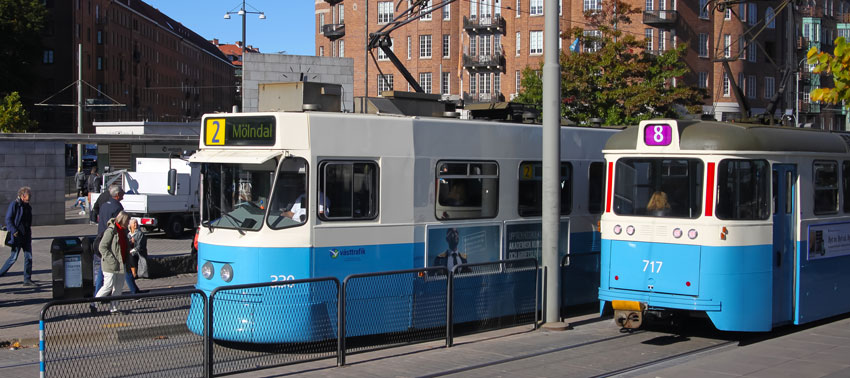Unique pilot for future travel surveys
In the autumn of 2017, a unique pilot for future travel survey data collection methods is being conducted in Gothenburg. The pilot is running concurrently to a traditional travel survey. The aim of the pilot is to obtain a better understanding of how future travel surveys can be performed, by comparing different data collection methods that run in parallel.

Why travel surveys?
In order to plan for more sustainable transport systems, we need to understand how people use them. Today almost all decisions on transport investments and policy priorities are based on travel survey data, even though today’s travel survey methods deliver data that is far from optimal.
Today most people use smartphones and have internet access 24 hours a day. This has the potential to give us much better information about how the transport system is used – which in the long run leads us to design a more efficient and human-centred system.
Demonstrating new innovative data collection methods
Traditional travel surveys ask respondents to complete details of their travel in paper-based questionnaires (and sometime by phone). The respondent should remember all trips made usually over a 24-hour period, how they travelled (bus, car, walk, etc) and the distance and time of each trip. This is a major weakness: the exact distances and times are hard for people to include in their responses, and shorter trips, as well as connecting trips (for example walking to a bus stop) are often forgotten. Completing such surveys can be a burden, and many who receive questionnaires do not complete them. Additionally, due to the high cost of performing these surveys, they are often only performed every 5 years or less frequently.
– “We are testing two new tools for data collection, an online questionnaire and a travel survey app called TRavelVU that helps to collect data”, says Emeli Adell at Trivector.
The two new data collection methods will be compared with the traditional travel survey (paper-based) to improve our knowledge of data quality, comparability and representativeness.
Looking at different ways of recruiting respondents

– ”But it’s not just new tools we’re testing,” Emeli continues. We also want to understand how we can recruit respondents in a different way in the future. In the pilot, we are using three different recruitment methods for the online questionnaire and the travel survey app:
- random selection of postal addresses,
- web panel, and
- crowdsourcing.
– We will compare which groups are represented based on the different recruitment techniques as well as response types. We want to understand which sections of the population respond to different sections as a way to understand who is represented in the data, and how this should be considered when representing a representative picture of travel.
More information
For more information, please contact Emeli Adell, +46 10-456 56 22 or Anna Clark, +46 10 456 56 23. Learn more about TRavelVU.
The pilot project is a joint effort between Transport Analysis, VTI (Swedish National Road and Transport Research Institute) and Trivector. The project is co-financed by the Swedish Transport Administration. It is a part of a larger project called “New solutions for future travel surveys” led by Transport Analysis.

